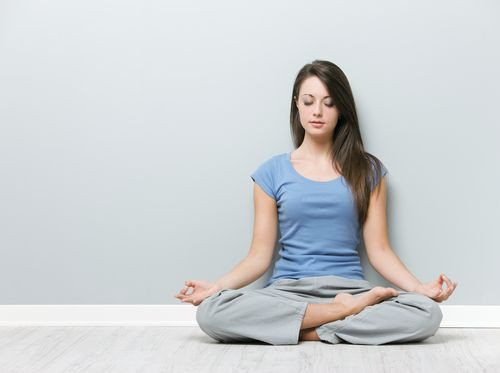Exercise Brings New Perspectives In People With Social Anxiety Disorder

A jog in the park or a session of yoga could change the way people see things, and help ease anxiety to a whole other level. Researchers from Queen’s University published their findings in PLOS One, which unlocked how exercise and relaxation activities, such as yoga, can actually change the way people perceive the world. These findings could prove to be an important new therapy approach for people with mood and social anxiety disorders.
Researchers used a dotted outline of a human — essentially just a series of dots, each one depicting a major joint on the body — for their study. Someone with social anxiety disorder tends to look at the image and believe it’s facing them, which indicates a threat. “We wanted to examine whether people would perceive their environment as less threatening after engaging in physical exercise or after doing a relaxation technique that is similar to the breathing exercises in yoga (called progressive muscle relaxation),” said Dr. Adam Heenan, a candidate in Clinical Psychology at Queen’s University said in a press release.
However, the ambiguous figure seemed to turn around for the 64 college participants who had the disorder, after they experienced exercise, which meant the dotted outline no longer resembled a threat and their environment as a whole became less threatening. Their anxiety levels went from extreme disorder categories to levels of anxiety a normal person would experience.
If the figure posed less of a threat, the researchers said, then people with social anxiety disorders would find the things around them less threatening. This was because their feelings of being threatened by the dotted figure would then be transferred to other objects, throwing them into a maddening cycle.
“We found that people who either walked or jogged on a treadmill for 10 minutes perceived these ambiguous figures as facing towards them (the observer) less often than those who simply stood on the treadmill,” Heenan said. “The same was true when people performed progressive muscle relaxation.”
Those who suffer from social anxiety disorder, also known as social phobia, have an irrational fear of being scrutinized and judge by others in social or performance situations. It takes a severe toll on their personal relationships and makes it difficult to form any friendships or romantic relationships, leaving them feeling powerless, alone, and even ashamed.
There are approximately 15 million American adults diagnosed with social anxiety disorder, and it typically begins to show during the early stages of their teenage years, according to the Anxiety and Depression Association of America. Easing the fear and anxiety for people whose lives are so influenced by this disorder just by exercising or practicing meditation and yoga, can play a powerful role in future therapy treatments. “This is a big development because it helps to explain why exercising and relaxation techniques have been successful in treating and mood and anxiety disorders in the past,” Heenan said.
Source: Heenan A and Troje NF. Both Physical Exercise and Progressive Muscle Relaxation Reduce the Facing-the-Viewer Bias in Biological Motion Perception. PLoS One. 2014.



























